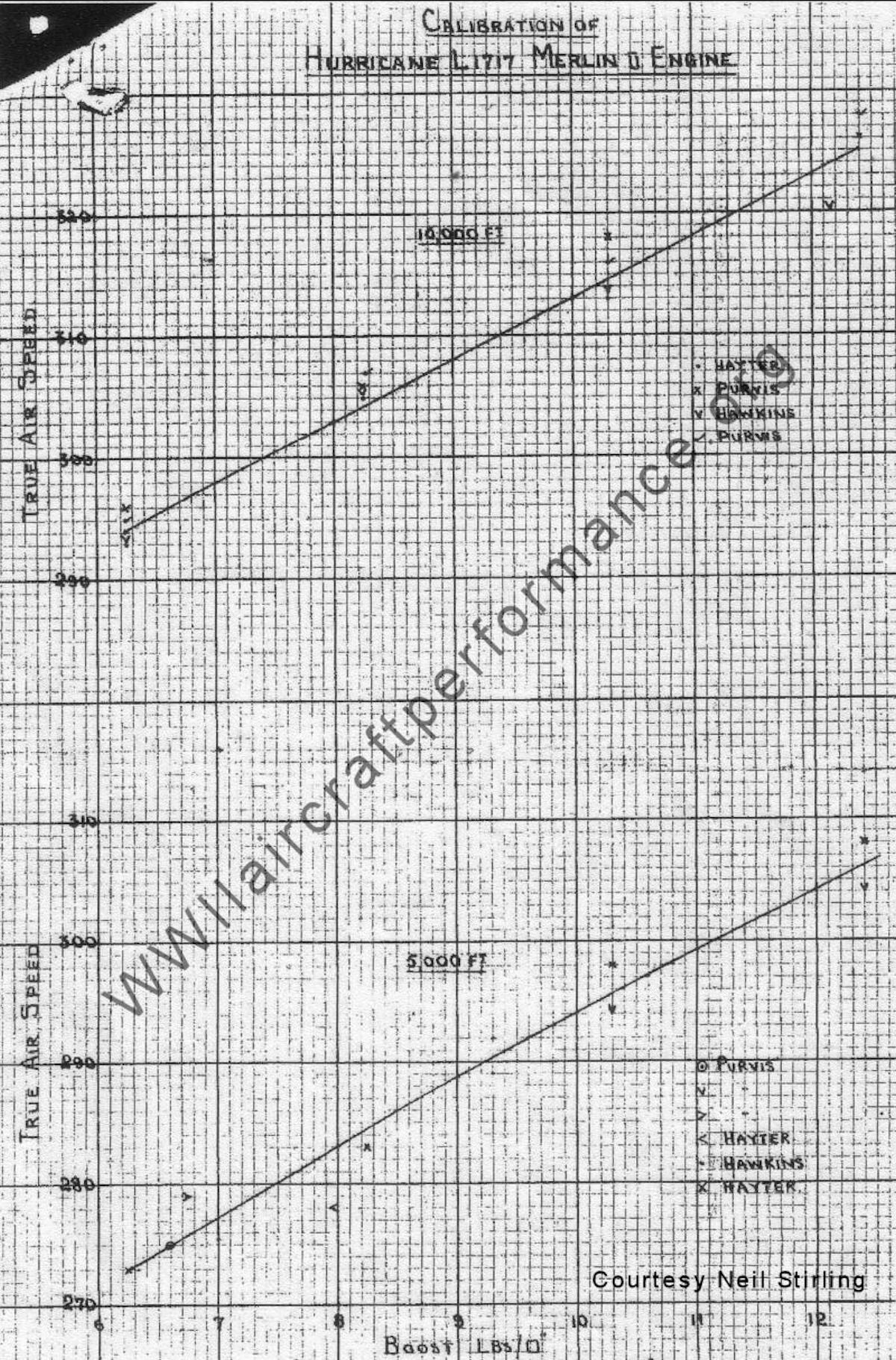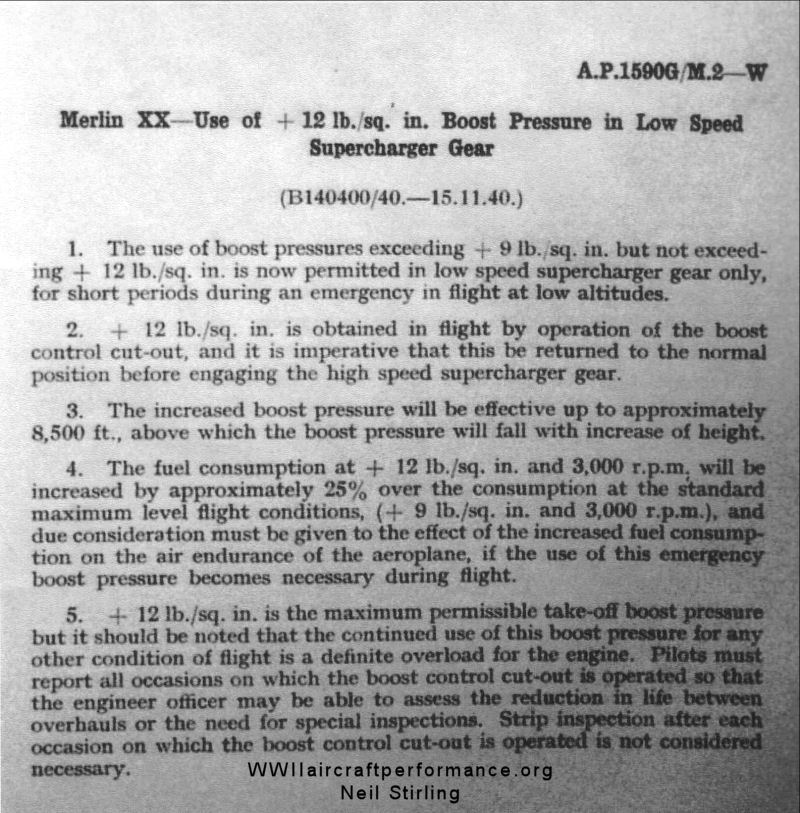
 |
|
#31
|
|||
|
|||
|
Quote:
If, as I suspect, you've posted a +9 curve then great. But why? If the objective is to refute +12 psi for combat then RTFM because it's in the Pilot's Notes for the correct aeroplanes from the correct year fitted with the correct engines, as is evidenced in the original post. The existence of a +9 curve does not preclude the existence of a +12 curve. In any case however, the title of this thread is Effect of boost control cutout prior to +12 psi boost modifications. I wrote the OP because the engine instruments indicate that we've got 87 octane fuel, and I figure that if we're going to have the wrong fuel modelled, we might as well have it modelled correctly. |
|
#32
|
|||
|
|||
|
This is not a 100 octane thread, but FYI:
According to documents I have copies of from the PRO in Kent, at the end of June, 1940 the RAF had: 336,000 tons of 100 Octane 270,000 tons of 87 Octane so, about 55% of aviation fuel stocks were 100 octane. In addition: End of August 1940: 64% of stocks were 100 octane End of Sept 1940: 64% End of Oct 1940: 64% End of Nov 1940: 63% ... with the total tonnage of both fuels increasing about 30,000 to 40,000 tons a month. All this right in the middle of the BoB. Not only were 100 octane stocks consumed through combat and wastage being replaced, stocks were increasing by 15,000 tons a month. The reason so much 87 octane is consumed during the BoB is that all training activities used 87 (including Spitfires and Hurricanes used in training), as well as transports, etc. Also, I believe the RAF ground vehicles were all using 87 octane from the same aviation stocks. Whenever Spits or Hurricanes modified for 100 octane were fueled with 87 octane, the ground crew inserted a locking pin in the boost cutout to prevent the throttle being pushed into the WEP zone. I think that came from a copy of a maintenance manual I have. For some odd-ball reason all flight sim developers appear to ignore the +12 boost advantage that 100 octane fuel and the CS propeller gave both the Spitfire and Hurricane. I'm not sure why this is, but it is. It appears this is the same for this sim (I don't have a copy of it.) |
|
#33
|
|||
|
|||
|
Quote:
Boost Curved toped at 9 - Maximum calibrating perf test run. Hurricane - Merlin XX. I hve detailled the SHP/BHP to give reader a way to understand the origin of dispersiveness in Merlin data on the web Last edited by TomcatViP; 05-27-2011 at 09:02 AM. |
|
#34
|
|||
|
|||
|
Quote:
"The 100-octane fuel (which enables the Merlin to receive no less than 12 lb. boost in emergency) must have been an asset." "A new airscrew specially designed for the fast single-engined fighters of the Royal Air Force, but which can, of course, be applied for civil purposes, is now in production at the factory of Rotol Airscrews, Ltd., and is also in service with the squadrons."So flight sim developers haven’t much excuse for getting it wrong every time Thanks for sharing the 100 octane info, very interesting! Quote:
Last edited by lane; 05-29-2011 at 01:08 PM. |
|
#35
|
|||
|
|||
|
Some real world results:
 There was no physical time limit on the use of 12lb boost, just a requirement to log the use and a suggestion that it be limited to 5 mins but some pilots used it for 30 mins. It did effect engine life but not severely, and later versions of the Merlin III on the Sea Hurricane were modded to allow 16lb boost and 1440hp, which was effective up to about 5500ft. Last edited by Seadog; 06-04-2011 at 07:57 PM. |
|
#36
|
|||
|
|||
|
These are test results from 1939, showing that a Merlin III could be run for many hours at 12lb boost:
 In the above test a Hurricane was run at 4.25 and 12lb boost for 20min and 5min repeatedly and only terminated at 49.5 hours when a glycol leak developed, by which time the engine had been run for over 8 hours at 12lb boost. Last edited by Seadog; 06-05-2011 at 07:28 PM. |
|
#37
|
|||
|
|||
|
Yeah I wonder why RR still state for the merlin XX perfs in 1941 the following (quote)
Max T.O 3000rpm + 12lb/sq.in boost (M.S only) Max climb 2650rpm + 9lb Max all out level 3000rpm + 9lb Max cruising 2650rpm +7b But certainly RR R&D dep didn't new all abt field's Merlin. Baahhh those stupid engineers ... |
|
#38
|
|||
|
|||
|
The Merlin XX played only a small part in the BofB, but it was approved for 12lb boost during emergencies in Nov 1940:
 and, since 12lb boost was available during TO right from its introduction, any pilot, at his discretion could use 12lb boost at any time or any altitude where it was possible, and there was no physical lockouts in the cockpit engine management system to prevent a pilot from doing this. |
|
#39
|
|||
|
|||
|
Lol
- The XX was a post BoB product hence as a fighter eng it shld hve beneficed of the former improvements - If 12lb MS is indicated it EXCLUDE any use of this level of boost above s/c alt Sry but your statement does not match any engineering rules and is contradicted by the submitted text. Let me explain : Supercharging put strain on your eng (300HP at recovering s/c alt) If at low alt a boost level is restricted it certainly can't be achieved at alt !! To give an exemple, my car has a turbocharger at 1.4 bar of boost (nearly 1.4 atm) I once had a friendly race against a motorbike in a mountainous road from 1K up to 3K meters. My boost is electronically regulated. My turbo s/c is capable of much higher boost value to be reliable in a series car. The higher we went the better was my engine against the motorbike naturally aspirated engine (same boost same HP for me- Lowering boost for him) up to the point that my 1.4t cars "matched" his much lighter vehicle. BUT the temp went to high as did the strain and (hopefully) the electronic module give it away before I blew the eng. That's what you risk with super/turbo charging. The lower the outside pressure is, the more the strain on the engine (mechanical or thermal respectively) will be. If a limit is settled at low alt, it means that it can't be superseeded at high alt otherwise the limit would be put at s/c alt (but as it was difficult to have accurate pressure measurement at alt in a moving ac at the time they might have choose to rely on a low alt limit). Baaah forget it I know that I am certainly loosing time writing this |
|
#40
|
|||
|
|||
|
Quote:
The text specifically allows 12lb boost in M gear for short periods of time during combat and during TO. It states the the boost override will provide 12lb boost up to 8500 ft after which it will gradually decline (to 9lbs at about 13000 ft): Quote:
However, as I've stated there is no physical interlock preventing a pilot from using the boost override in S gear, and using the Boost Override in S gear will provide additional power up to about 19000ft. Yes, this is an overload on the engine and cooling system but every pilot flying a Hurricane II always had the option to engage the boost override at any altitude and in either M or S gear. |
 |
|
|